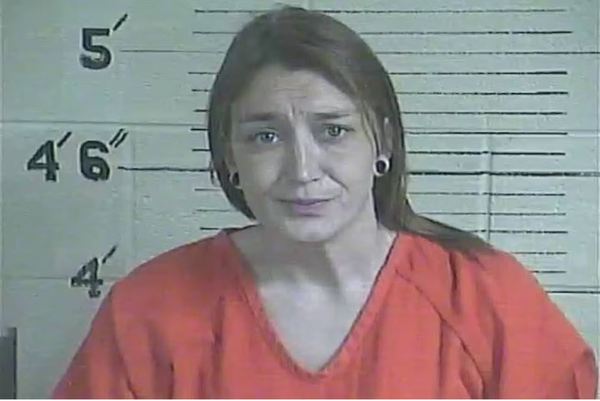
Moving into a retirement community often symbolizes a new chapter of freedom, leisure, and social connection. These communities are designed to offer a hassle-free lifestyle, with amenities and maintenance handled for you. However, this curated environment comes with a set of rules and regulations designed to ensure peace, safety, and uniformity for all residents. Many newcomers are surprised to find that certain activities they took for granted in their previous homes are strictly prohibited. Before you sign on the dotted line, it’s crucial to understand the common restrictions that govern life in many U.S. retirement communities.
1. Long-Term Stays for Underage Guests
Many active adult communities are specifically designated as “55+” to comply with the Housing for Older Persons Act (HOPA). This federal law allows them to legally exclude families with children, but it comes with strict requirements. To maintain this status, at least 80% of occupied units must have at least one resident who is 55 or older. Consequently, there are firm rules limiting how long guests under a certain age (usually 18) can stay, often capping visits at a few weeks per year. This ensures the community retains its adult-focused character but can be a challenge for grandparents who enjoy extended visits from grandchildren.
2. Certain Types of Pets
While many retirement communities are pet-friendly, they almost always have restrictions in place. These rules are not just about keeping residents happy but also about insurance liability and property cleanliness. Most communities enforce limits on the number of pets you can own, typically one or two. Furthermore, there are often weight or breed restrictions, with large dogs or certain breeds perceived as aggressive commonly banned. You may also be required to submit your pet for a “pet interview” to ensure it has a suitable temperament for community living.
3. Operating a High-Traffic Business
The rise of remote work has blurred the lines between home and office, but many retirement communities are holding firm on their rules against at-home businesses. While a quiet desk job writing or consulting is usually acceptable, anything that increases traffic is typically forbidden. This includes businesses that involve clients visiting your home, such as therapy practices, music lessons, or salon services. The rules are designed to minimize noise, parking issues, and security concerns, preserving the residential feel of the neighborhood.
4. Unapproved Exterior Modifications
Maintaining a uniform and aesthetically pleasing appearance is a top priority for most retirement communities, which helps protect property values. For this reason, homeowners’ associations (HOAs) have strict rules about any changes you can make to the exterior of your home. You cannot simply decide to paint your front door a new color, change light fixtures, or install a different style of mailbox without approval. You must submit your plans to an architectural review committee, which will ensure the changes align with the community’s established design standards.
5. Parking Large or Commercial Vehicles
Parking regulations are a major point of emphasis in virtually all retirement communities. The rules are intended to keep the streets looking tidy and to prevent large vehicles from obstructing views or taking up excess space. It is almost always prohibited to park commercial vehicles, RVs, boats, or trailers in your driveway or on the street. Residents who own these vehicles are typically required to store them in a designated, often off-site, storage area for a separate fee. Even guest parking is often regulated with specific designated spots and time limits.
6. Smoking in Most Common Areas
As health consciousness grows, smoking restrictions have become increasingly common and strict. While smoking inside your own unit might be allowed, it is almost universally banned in all indoor common areas like clubhouses, gyms, and hallways. Many communities are now extending these bans to outdoor spaces as well, such as pools, patios, and even private balconies or lanais. These rules are enacted to protect residents from secondhand smoke and to reduce the risk of fire, reflecting a broader trend in multi-family living.
7. Planting Unapproved Gardens or Trees
If you have a green thumb, you may be disappointed by the landscaping rules in many retirement communities. To maintain a cohesive look, HOAs often dictate what you can and cannot plant in your yard. You may be restricted to a pre-approved list of plants, shrubs, and trees to ensure consistency throughout the neighborhood. Vegetable gardens might be banned entirely or relegated to a small, designated community garden area. These regulations prevent haphazard landscaping that could be seen as an eyesore by your neighbors.
8. Making Loud Noises During Quiet Hours
Peace and quiet are among the top reasons people choose to move to retirement communities. To protect this tranquility, nearly all of them have strictly enforced quiet hours, typically from the late evening until the early morning. During this time, residents are expected to keep noise from televisions, stereos, and conversations to a minimum. Running loud appliances like vacuums or washing machines may also be discouraged during these hours. Repeated violations can result in warnings and even fines from the HOA.
9. Airing Laundry Outdoors
The simple act of hanging your laundry out to dry on a clothesline is a nostalgic image, but it’s one you are unlikely to see in a modern retirement community. The vast majority of these communities have rules that explicitly forbid outdoor clotheslines or drying racks. This restriction is purely for aesthetic reasons, as they are considered unsightly and are believed to lower the visual appeal of the neighborhood. Residents are expected to use electric or gas dryers inside their homes, even on a perfectly sunny day.
10. Freely Renting Out Your Home
You may own your home, but you likely don’t have the freedom to rent it out to whomever you want, whenever you want. Many retirement communities have significant restrictions on leasing your property to protect the community’s integrity and HOPA status. There may be a cap on the total number of homes that can be rented at any given time, or a minimum lease term of six months to a year to prevent transient occupants. Furthermore, all potential renters must meet the community’s age requirements and be approved by the HOA board.
The Price of a Peaceful Community
While some of these rules might seem restrictive, they are all created with the goal of protecting residents’ quality of life and investment. These regulations ensure the community remains clean, quiet, and aesthetically pleasing for everyone who lives there. Before committing to a home, it’s essential to get a copy of the HOA’s covenants, conditions, and restrictions to read them thoroughly. Understanding the rules upfront can prevent future frustration and ensure you choose a home where you can comfortably thrive. Life in many retirement communities involves a trade-off between personal freedom and communal harmony.
What’s the most surprising rule you’ve ever encountered in a retirement community or HOA?
Read More:
10 Retirement Mistakes That Leave Your Spouse Homeless
10 Ways You’re Outshining Boomers in Retirement (And How to Keep It Up)
The post 10 Activities That Are Banned in More Than Half of U.S. Retirement Communities appeared first on Budget and the Bees.







